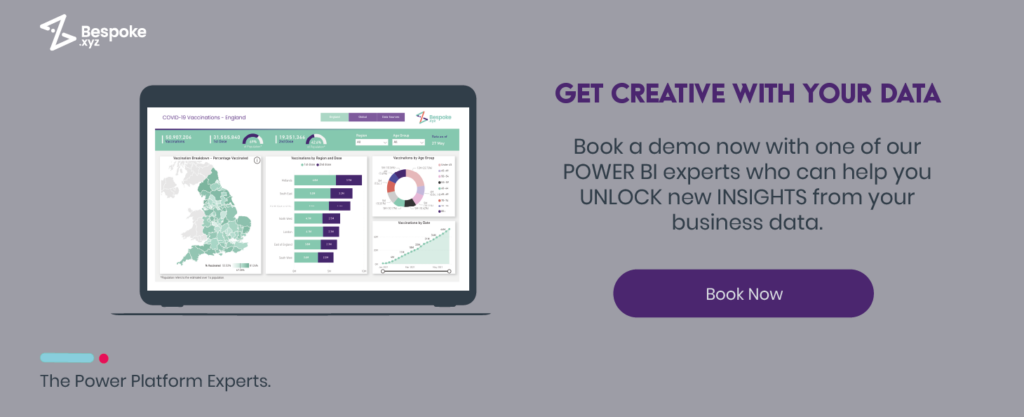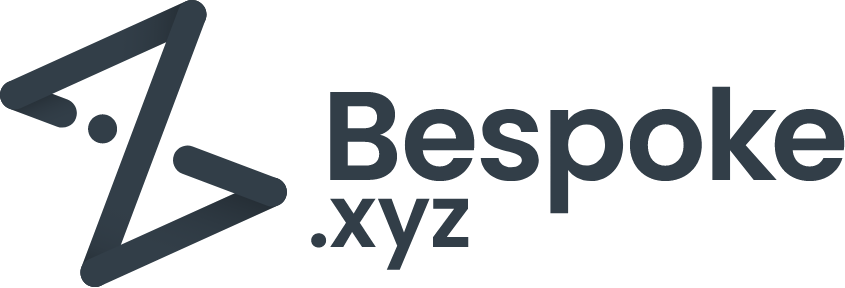Business today relies heavily on data. In fact, 90% of business analysts and business professionals say that data and analytics are essential to their organisation’s digital transformation initiatives. Yet many businesses still struggle to utilise their data effectively.
Data is powering everything we do these days, so understanding it is crucial if you want to stand out from the competition. The question is, where do you start, and what exactly can you do with data?
So rather than just listing off the benefits in this article, we’re sharing some real-life Microsoft Power BI examples to help you get started.
What is Microsoft Power BI?
With Power BI, users can create highly aesthetic and customisable dashboards (without coding skills) and share them directly with stakeholders.
As a Microsoft tool, Power BI is particularly suitable for Excel users due to its similar interface and deep integrations. The platform also provides advanced features that allow users to transform, clean, and collaborate data at scale, as well as set up granular access controls.
Although Power BI provides many great features, its dashboarding functionality provides an at-a-glance overview of all the metrics teams and organisations care about.
Who can make use of Power BI?
The short answer… EVERYONE! Every department and every industry can make use of Power BI to gain insights from their data and make better data-driven decisions. Regardless of the size of the business, this tool is popular for its powerful and flexible data visualisation, analysis, and reporting.
If you’re wondering what this actually looks like in practice, let’s take a look at some incredible Power BI examples in action.
Microsoft Power BI examples
As mentioned, Power BI can be utilised by absolutely EVERYONE! Our own clients are a testament to that. We’ve worked with businesses of all sizes, across pretty much every industry, from healthcare to manufacturing. So, here are a few examples of companies that use Power BI…
Power BI use case: How Otsuka saved 4 days of manual processing
Before implementing Power BI, Otsuka’s UK team was spending up to 4 days per month manually downloading and consolidating data into Excel reports. As with anything manual, it was susceptible to human error and inaccuracies.
Despite the availability of data, it was difficult to interpret due to the lack of centralised reporting across many internal departments. It was also important for the team to have continuous transparency across key metrics, as well as a way of sharing and presenting their company-wide KPIs during their monthly town halls.
Using Power BI, Bespoke developed and deployed a Power BI dashboard for Otsuka which consisted of two key views – one for Finance, and one for Operations. Using the dashboard, Otsuka can track their performance against each of their key metrics against their targets.
As a result, Otsuka has now automated all reporting for this process by connecting the dashboard to multiple different systems. The intuitive nature of the system makes it easy for users to quickly grasp key statistics and understand the story behind them. This results in better outcomes for the entire team.
Power BI use case: Sobi gains better insight into key forecast drivers
A key goal of Sobi’s annual long-range planning exercise was to gather more information and insights on key revenue drivers from affiliates. But, there were several challenges with the current approach, such as limited data collection, inconsistent metrics (for products and countries), and no standard forecasting approaches in place.
They were using multiple Excel files to gather and consolidate insights, which was time-consuming, required a lot of discussion, and often resulted in additional questions. They knew if they wanted to scale and become more efficient, a new approach was needed.
Our first step was to create a consolidated data tool that combined data from various Excel forecasts of different structures and formats. With this established, we were able to create a custom Power BI dashboard for Sobi, which featured 11 key products and could be expanded as needed.
A consolidated dashboard takes into account layers of specific requirements in the backend, including views for specific products or countries, as well as differing requirements regionally and globally. By incorporating these requirements, automating data capture and refreshing, the output is simple, accurate, and effective.
Power BI use case: Rhodar improves its output quality
Rhodar’s internal processes require a detailed risk assessment process for all projects they work on. Due to the complexity of this process, the client wanted to create a standardised and intuitive application that would allow end users to quickly complete a form without requiring technical expertise, while also ensuring data accuracy and accountability at all stages.
Leveraging the Power Platform (of which Power BI is part of), we developed an application with an intuitive user interface specifically tailored for Rhodar users. By incorporating business rules and validation, single-point entry and automation of data across the application, the solution significantly reduced the time it took end users to complete a risk assessment, and greatly enhanced output quality.
Further insights can also be gained about how many risk assessments are completed and by which teams, as well as where the biggest risks occur regularly, which helps guide future decisions about projects.
Power BI use case: Ernest Young brings products to market faster
Taking business trips and living abroad for work might sound exciting, but they also involve a lot of coordinating in terms of tax status, compensation, and immigration changes. As a means of centralising that coordination for its clients, EY teams developed the EY Mobility Pathway (EYMP).
It was a complex task and involved a huge amount of data. But, with the help of the Microsoft Power Platform and other technologies, the product was launched in record time!
Through EYMP, the organisation can now provide a more sophisticated, streamlined service to its clients. Instead of storing information in siloed applications, EY now provides a rich user experience to help manage information within one tool for their clients.
Power BI use case: Heathrow prepares rather than reacts
There is nothing more stressful than a cancelled flight or a change of plans when travelling. But, for the 80 million passengers who travel through Heathrow Airport every day, Microsoft Power BI and Microsoft Azure are reducing those nerves.
Using Azure, Heathrow pulls information from back-end systems and pushes it to Power BI, which shows employees in real-time how airport passenger traffic is changing so they can prepare.
Imagine if a shift in the jet stream delayed the landing of 20 flights, resulting in 6,000 extra passengers in the airport at 6:00 PM. In the past, immigration, customs, baggage handling, and food services staff were unaware of those extra passengers until they arrived, leaving them to muster the best they could. With Power BI, staff receive an alert one to two hours before the event, so they can add extra staff, buses, food, and other resources.
Want to see even more Power BI examples? Head over to our case studies page.
Getting started with Power BI implementation
Whether you want to move away from Excel and view your data visually, or you want a full Power Platform Adoption Strategy, Bespoke can help.
Our mission is to simplify data by challenging the norm and offering alternative viewpoints, meaning that we can deliver creative solutions tailored to your future goals.
So, if you’re ready to take the path to data-driven success, just drop us a line and a friendly Power BI specialist from the Bespoke team will be in touch.


